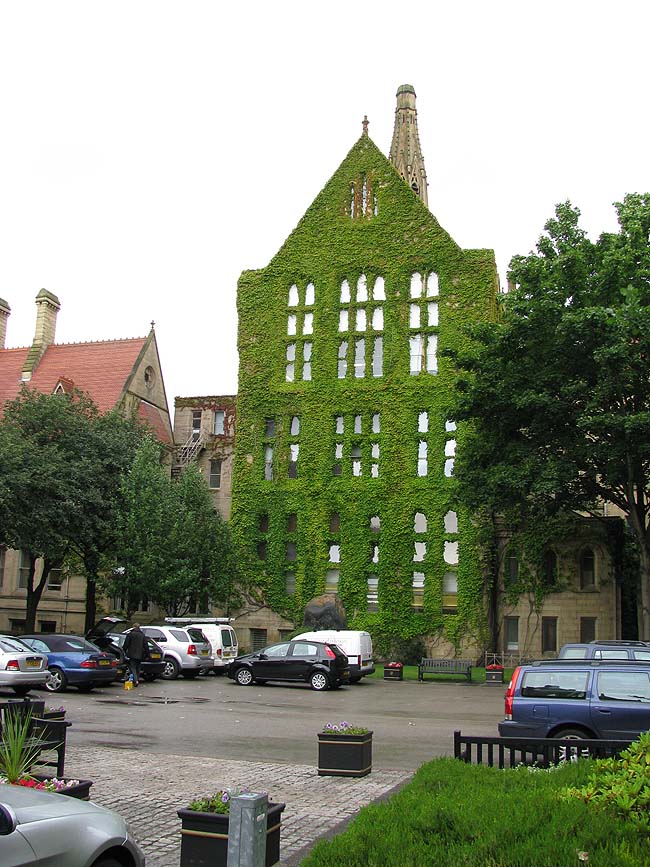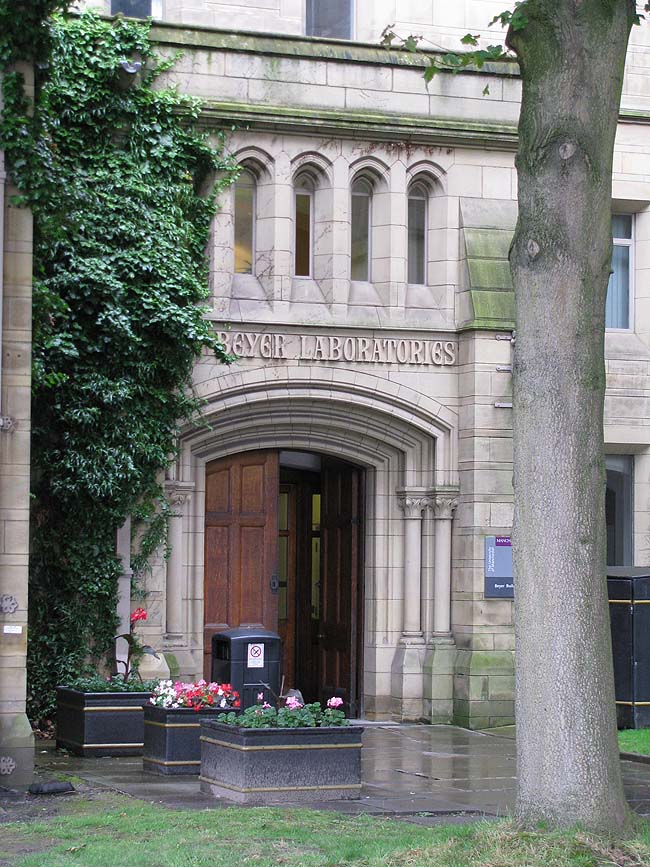|
Beyer Building - University of Manchester
|
 Upon graduation, he obtained a state grant from the Saxon Government to visit the United Kingdom to report on weaving machine technology. He visited Manchester, then considered the major centre in engineering technology. He returned to Dresden to file his report, but then returned to England in 1834. He wanted experience at a large foundry, but his youth and foreign origin seemed to tell against him. At one interview, he was offered some gold sovereigns to defray the costs of his journey. He angrily expostulated that it was work that he wanted, and this swayed the potential employer. He began work with Sharp, Roberts and Company in Manchester, one of the foremost British locomotive builders, and developed a lifelong friendship with Richard Roberts. [edit] Beyer-Peacock In 1853, with Richard Peacock, Beyer founded Beyer-Peacock in Gorton, Manchester. The new works was built on a site that was then virtually in open country, and the undertaking was always known locally as 'Gorton Tank'. Beyer-Peacock became one of the most famous locomotive building companies, exporting engines all over the world and becoming famous after Beyer's death for the 'Beyer-Garratt' articulated locomotive. He was a founding member and a prime mover in the foundation of the Institution of Mechanical Engineers in 1847, but there is no truth in the long-standing report that the institution was founded in his house in Manchester (it was in fact founded at the Queens Hotel at Curzon Street railway station in Birmingham). He was a generous supporter of Owens College (predecessor of today's the University of Manchester) and endowed the Beyer Chair of Applied Mathematics. He bequeathed £114,000 (roughly £10 million today) to the college.  |